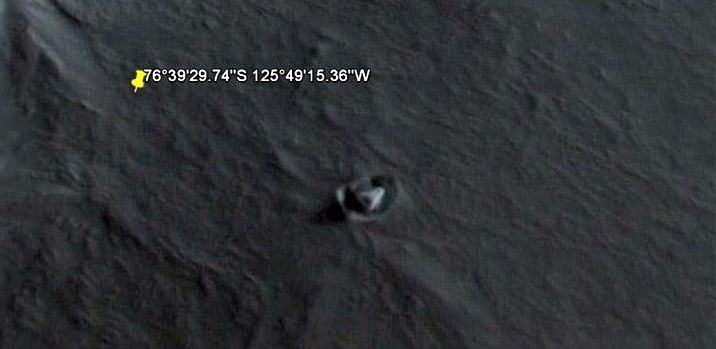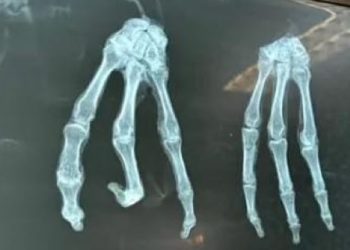We’ve grown accustomed to finding peculiar things on Google Earth, especially in less-traveled areas like Antarctica. An object with a distinct triangular shape appears at coordinates 76°39’29.74″S 125°49’15.36″W. Not only that, but its surroundings point to a collision… or a landing. What exactly is it about?
“We see a kind of crater in the midst of nowhere, between frozen hills, with what appears to be a triangular item in its center, which looks as if it has been made by someone,” they state on the SecureTeam10 channel.
“It appears as if the object has landed and left its imprint: its shadow is also clearly cast on the snow.”
Tyler discusses how the shape of this Antarctic object reminds him of others spotted on the Moon, as well as the renowned triangular or pyramidal UFOs, in a video posted to YouTube and reposted here.
Could this be the site of a UFO crash or landing?

Others are less concerned, believing it to be a simple meteorite roughly 8 meters in diameter, as determined by Google Earth.
When you consider how much would have burned up in the atmosphere, this is a substantial amount. Many have been discovered in Antarctica, after all.
Whatever it is, natural or not, the truth is that the object does not exist in the software’s image history until the year 2012, suggesting that it dropped there – or emerged from the ice – after that date.
NOTE:
Antarctica
Antarctica (/ænˈtɑːrktɪkə/ (![]() listen))[note 1] is Earth‘s southernmost and least-populated continent. Situated almost entirely south of the Antarctic Circle and surrounded by the Southern Ocean (also known as the Antarctic Ocean), it contains the geographic South Pole. Antarctica is the fifth-largest continent, being about 40% larger than Europe, and has an area of 14,200,000 km2 (5,500,000 sq mi). Most of Antarctica is covered by the Antarctic ice sheet, with an average thickness of 1.9 km (1.2 mi).
listen))[note 1] is Earth‘s southernmost and least-populated continent. Situated almost entirely south of the Antarctic Circle and surrounded by the Southern Ocean (also known as the Antarctic Ocean), it contains the geographic South Pole. Antarctica is the fifth-largest continent, being about 40% larger than Europe, and has an area of 14,200,000 km2 (5,500,000 sq mi). Most of Antarctica is covered by the Antarctic ice sheet, with an average thickness of 1.9 km (1.2 mi).
Antarctica is, on average, the coldest, driest, and windiest of the continents, and it has the highest average elevation. It is mainly a polar desert, with annual precipitation of over 200 mm (8 in) along the coast and far less inland. About 70% of the world’s freshwater reserves are frozen in Antarctica, which, if melted, would raise global sea levels by almost 60 metres (200 ft). Antarctica holds the record for the lowest measured temperature on Earth, −89.2 °C (−128.6 °F). The coastal regions can reach temperatures over 10 °C (50 °F) in summer. Native species of animals include mites, nematodes, penguins, seals and tardigrades. Where vegetation occurs, it is mostly in the form of lichen or moss.
The ice shelves of Antarctica were probably first seen in 1820, during a Russian expedition led by Fabian Gottlieb von Bellingshausen and Mikhail Lazarev. The decades that followed saw further exploration in French, American, and British expeditions. The first confirmed landing was by a Norwegian team in 1895. In the early 20th century, there were a few expeditions into the interior of the continent. British explorers were the first to reach the magnetic South Pole in 1909, and the geographic South Pole was first reached in 1911 by Norwegian explorers.
Antarctica is governed by about 30 countries, all of which are parties of the 1959 Antarctic Treaty System. According to the terms of the treaty, military activity, mining, nuclear explosions, and nuclear waste disposal are all prohibited in Antarctica. Tourism, fishing and research are the main human activities in and around Antarctica. During the summer months, about 5,000 people reside at research stations, a figure that drops to around 1,000 in the winter. Despite its remoteness, human activity has a significant impact on the continent via pollution, ozone depletion, and climate change.
© 2023, The Mysterious Woods. All rights reserved. On republishing this post you must provide link to original post!










